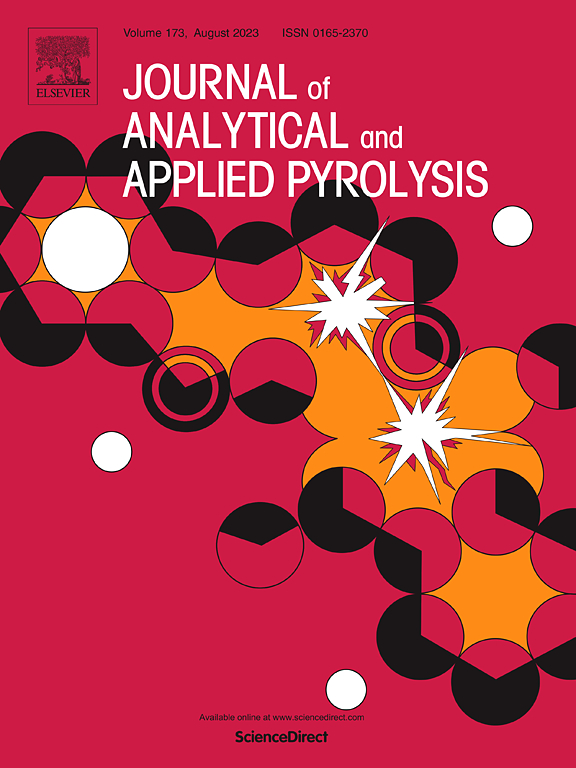Enhancing hydrocarbon-rich bio-oil by microwave catalytic co-pyrolysis of sugarcane bagasse and digestate from anaerobic digestion of poultry litter
IF 5.8
2区 化学
Q1 CHEMISTRY, ANALYTICAL
引用次数: 0
Abstract
This study investigates the production of hydrocarbon-rich bio-oil through microwave co-pyrolysis of sugarcane bagasse (SB) and digestate derived from the anaerobic digestion of poultry litter (PD). The synergistic effects of co-feeding these two untreated feedstocks for a waste-by-waste treatment approach were evaluated under microwave pyrolysis conditions, with a focus on enhancing the yield and quality of the resulting bio-oil. A range of catalysts, including biochar, Fe-supported biochar, HZSM-5, acid-treated HZSM-5, and CaO, were employed to assess their influence on hydrocarbon content and product distribution. The results revealed that co-feeding of 50:50 for SB and PD (S50P50) produced the highest bio-oil yield, which was higher by 10–22 % than single feeding. Also, the highest hydrocarbon content in the bio-oil (32.5 %) was found under the S50P50 condition with fewer oxygen-containing components. Under acid-treated HZSM-5 catalyst, the highest hydrocarbon was detected in the bio-oil (41 %) overall catalysts and non-catalytic conditions. Overall, the findings demonstrate that microwave co-pyrolysis of optimal feeding ratio (S50P50), especially in the presence of an effective acid-treated HZSM-5 catalyst, is a promising route for converting these untreated residues into high-quality bio-oil suitable for fuel applications.
微波催化蔗渣与家禽垃圾厌氧消化消化物共热解制备富烃生物油
研究了微波共热解甘蔗甘蔗渣(SB)与禽畜粪(PD)厌氧消化产生的消化液生产富碳氢生物油的工艺。在微波热解条件下,研究了两种未经处理的原料共投的协同效应,重点是提高所得生物油的产量和质量。采用生物炭、铁负载生物炭、HZSM-5、酸处理HZSM-5和CaO等多种催化剂,考察其对烃类含量和产物分布的影响。结果表明,SB与PD (S50P50)以50:50的比例共投喂可获得最高的生物油产量,比单独投喂提高10-22 %。在含氧组分较少的S50P50条件下,生物油中烃类含量最高(32.5 %)。在酸处理的HZSM-5催化剂条件下,生物油中检出的烃类最高(41% %)。总体而言,研究结果表明,最佳进料比(S50P50)的微波共热解,特别是在有效的酸处理HZSM-5催化剂的存在下,是将这些未经处理的残留物转化为适合燃料应用的高质量生物油的有希望的途径。
本文章由计算机程序翻译,如有差异,请以英文原文为准。
求助全文
约1分钟内获得全文
求助全文
来源期刊
CiteScore
9.10
自引率
11.70%
发文量
340
审稿时长
44 days
期刊介绍:
The Journal of Analytical and Applied Pyrolysis (JAAP) is devoted to the publication of papers dealing with innovative applications of pyrolysis processes, the characterization of products related to pyrolysis reactions, and investigations of reaction mechanism. To be considered by JAAP, a manuscript should present significant progress in these topics. The novelty must be satisfactorily argued in the cover letter. A manuscript with a cover letter to the editor not addressing the novelty is likely to be rejected without review.

 求助内容:
求助内容: 应助结果提醒方式:
应助结果提醒方式:


